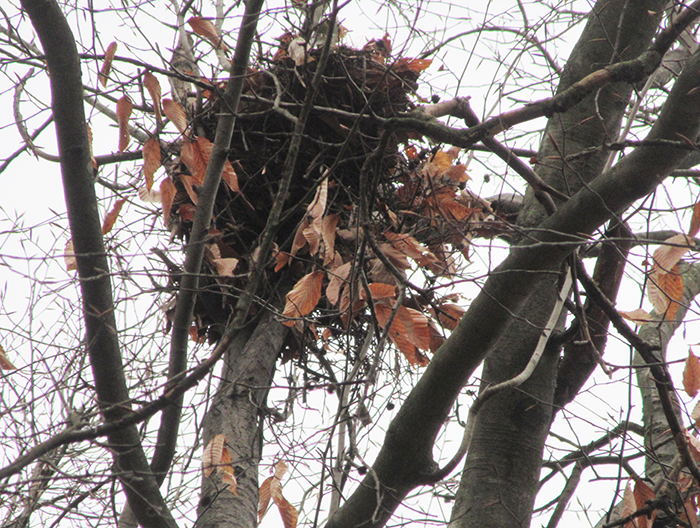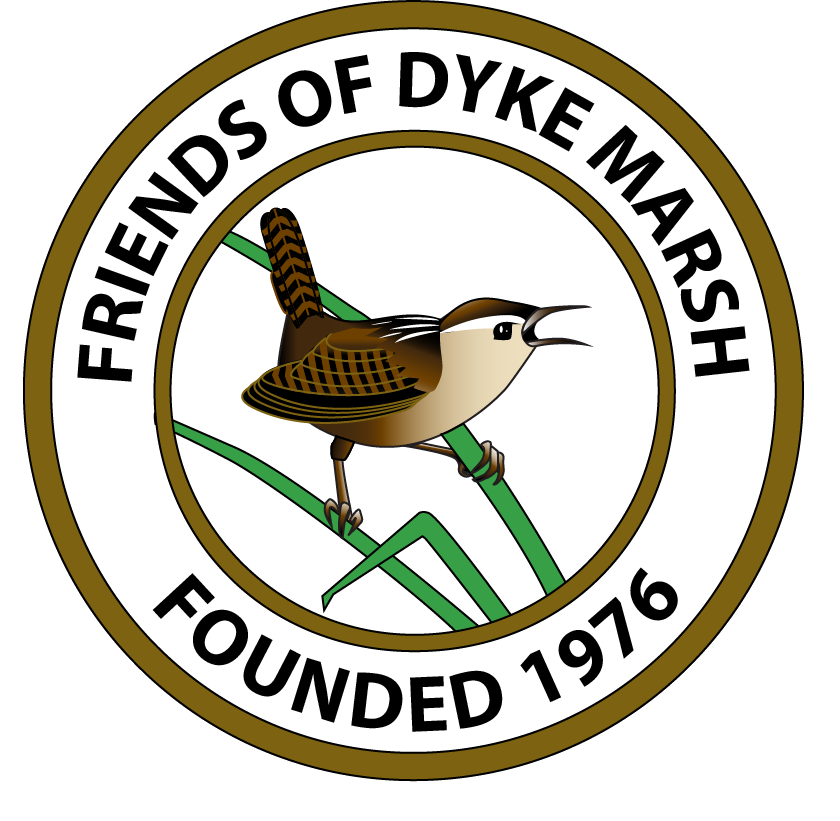February can be cold, gray and relatively quiet, but nature is never totally dormant. Here are a few more things going on in the Dyke Marsh Wildlife Preserve and on the Potomac River this winter.
Wetlands like Dyke Marsh, while not very green, are still supporting biodiversity, storing water and acting as buffers against storms and flooding. At low tide, dead or dying spatterdock plants are spread across the mudflats. Cattails sway in the breeze.
Fish, frogs and turtles have slowed down their metabolism and some wildlife, like frogs, have burrowed into the mud to survive in a state of dormancy. Dragonflies, mayflies and stoneflies are overwintering at nymphs in their watery world.
Bald eagles along the river are incubating eggs and probably rearing young eaglets. The adults started bringing sticks to build up last year’s nests as early as November.
Some of the waterfowl that wintered here have gone north to breed and raise their young and if dark-eyed juncos are not yet gone, they will be soon. Great horned owls are hooting, searching for a mate.
Plants may not have summer leaves or flowers, but some have fruits or berries. Poison ivy’s berries are food for wildlife like Eastern bluebirds. Beware! Poison ivy’s hairy vine, like the plant’s leaves, can cause rashes on susceptible people. Cedar waxwings and American robins are feasting on American holly berries. Many bird species feed on Eastern red cedar berries.
Slowly swelling buds signal that spring is coming. Beech and red oak trees have kept last summer’s leaves all winter, but will drop them soon.

Eastern gray squirrel nests or dreys stand out in the trees. The nests are roundish clumps about 30 feet above ground and have an outer layer of brown leaves. The squirrels are preparing to house their young, born between February and April. Male squirrels chase females. part of their mating ritual.
Beavers are using their lodges. Steam rising from the lodges can indicate that the lodges are occupied.
Many insects overwinter as larvae, nymphs or pupa. Some insects like bees spend the winter inside hollow stems. If a warm day occurs, a mourning cloak butterfly may emerge, showing off its maroon wings with yellow dorsal edges. Mourning cloaks are the first butterflies to emerge in late winter. And while they consume nectar at times, they prefer tree sap.
Looking ahead to March
March weather can be unpredictable, but spring will unfold. Some blossoms will appear and overwintering insects and amphibians will emerge. Vernal pools will thaw.
Redwing blackbirds will start establishing their territories in the cattails. Listen for the male’s conk-la-lee song.
Ospreys will return, mate and reconstruct nests or build nests. Wood ducks will settle into natural cavities. Bald eagles will bring fish and other prey to their nestlings.

